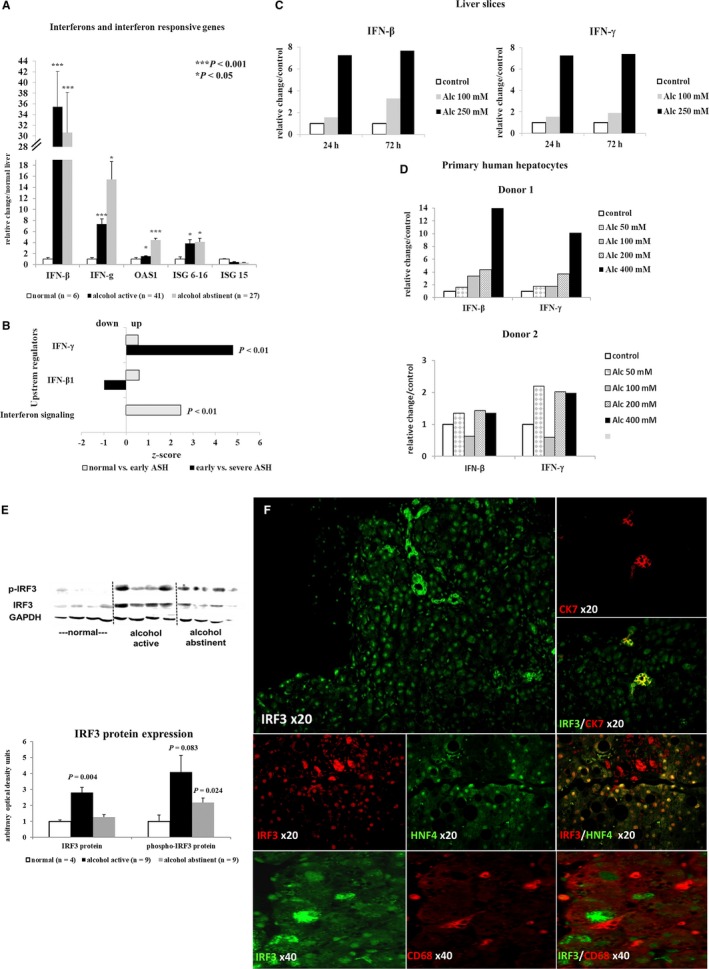Figure 6.

Activation of the IFN pathway in hepatocytes. (A) Quantitative real‐time PCR of INF‐β and IFN‐γ and IFN‐responsive gene mRNAs showing strong activation of IFN signaling in liver tissue of active drinkers that do not regress after 14 days of abstinence. (B) RNA sequencing analysis showing increased IFN‐γ footprint and IFN signaling early in ALD. (C) Representative experiment showing induction of IFN‐β and IFN‐γ mRNA in PCLS cultured for up to 72 hours with or without (control) addition of alcohol. (D) Stimulation of cultured primary human hepatocytes with increasing doses of alcohol for 16 hours or 24 hours, showing that already low doses of alcohol (50‐100 mM) induce IFN‐β and IFN‐γ mRNA expression. (E) Western blot of total and phosphorylated upstream IRF3, demonstrating increased levels in active drinkers. (F) Representative staining of IRF3 expression in livers of active drinkers. Immunofluorescence staining shows IRF3 nuclear staining in hepatocytes (HNF4+) as well as cytoplasmic staining in CK7‐positive bile ducts, but no co‐localization of IRF3 in CD68‐positive Kupffer cells. Indicated P values refer to normal liver. Abbreviations: Alc, alcohol; GAPDH, glyceraldehyde 3‐phosphate dehydrogenase; HNF4, hepatocyte nuclear factor 4; ISG, IFN‐stimulated gene; OAS1, 2′‐5′ oligoadenylate synthetase 1.
